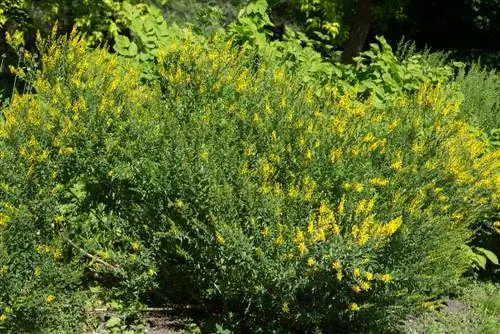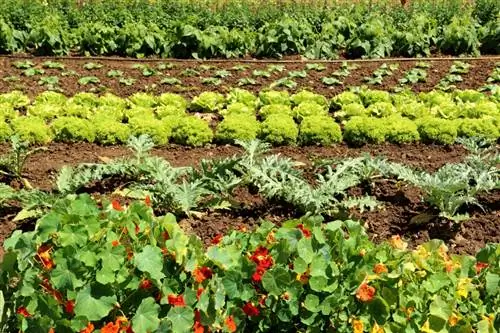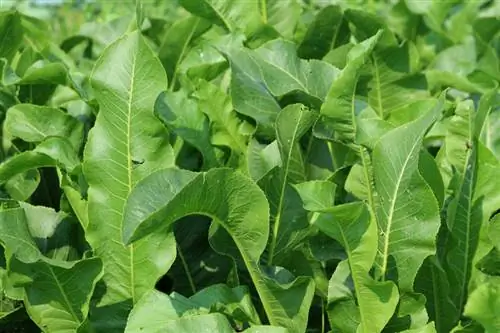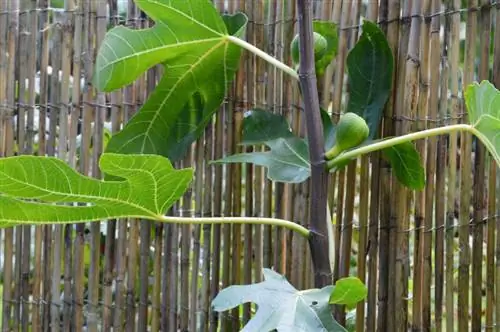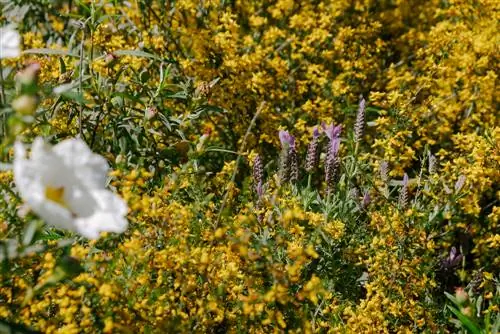- Author admin [email protected].
- Public 2023-12-16 16:46.
- Last modified 2025-06-01 06:02.
Not only is it hardy and easy to care for, the gorse also blooms beautifully and thrives even in very poor soil. It is therefore ideal for many locations. However, there are a few things you should keep in mind when planting.
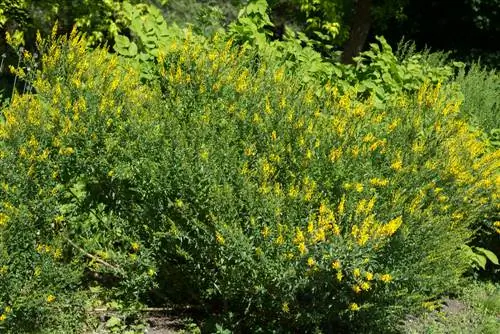
How should you plant broom?
When planting gorse, choose a sunny location and poor, sandy soil. The plant should be purchased in a container or pot, the planting hole should be dug deep enough and filled without fertilizer. After planting, the gorse is watered well and should no longer be transplanted.
Finding the right place for gorse
All types of gorse prefer a location in full sun, the warmer the better. Not even the blazing midday sun frightens the gorse. However, he doesn't feel comfortable in the shade at all. It will neither grow well nor bloom abundantly there.
Before planting gorse, remember that it is poisonous. For small animals, nibbling on the bush can be fatal and the tempting colorful flowers and small pods are also quite dangerous for children.
The nature of the soil
The gorse can also feel at home where other plants are already “starving” because it prefers poor soil. This can be sandy and dry. On the other hand, you won't have much fun with your gorse on waterlogged ground. The roots easily begin to rot and the plant dies.
Good company for your gorse
Even in nature, gorse often grows in the company of other heather plants. You can use this property well for your garden. Ornamental grasses, junipers and wild roses can also be combined well with broom. In addition, some types of broom are ideal for planting in rockeries, Mediterranean beds or embankments.
Planting gorse - step by step
Since the roots of the broom are quite long and sensitive, it is best to buy a plant in a container (€7.00 on Amazon) or a flower pot. Dig a planting hole that is sufficiently deep, at least as deep as the length of the root of your gorse. If you would like to create a drainage layer to improve water drainage, then the hole should be correspondingly deeper.
Be sure to loosen heavy soil with a little sand and, as an exception, do not add fertilizer or compost to the planting hole. After all, not only should the leaves grow, but also plenty of flowers. Water your freshly planted gorse well. Once it has grown, watering is no longer necessary, but transplanting is no longer recommended.
The most important things in brief:
- ideally buy a pot or container plant
- be sure to plant in a sunny place
- combines well with other plants
- loose up too firm soil with sand
- do not plant in nutrient-rich soil
- Dig the planting hole deep enough
- DO NOT add fertilizer
- water well after planting
- do not transplant grown gorse anymore
Tip
Choose the location for your broom carefully, it may not be transplanted later.

